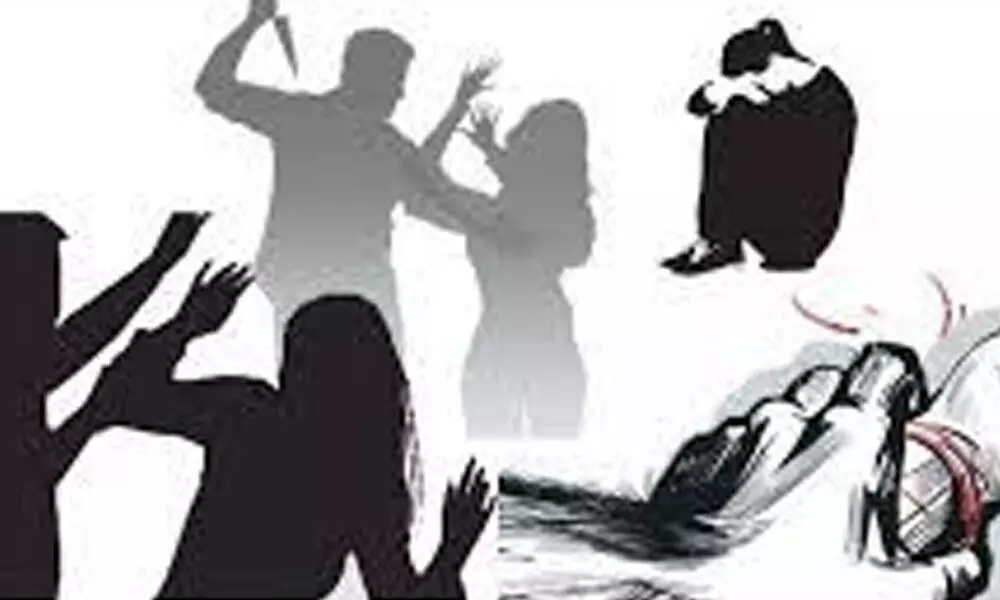Who'll bell the cat?

Who'll bell the cat?
Crimes against women continue in matrilineal Meghalaya
Like Economics, Sociology, too, cannot be a durable truth. It requires constant attention, closer scrutiny and revision. Such a notion or rather the conviction is reflected in the case of crimes against women. Which of the two worlds, a pro-feminist or matrilineal one or male-chauvinistic one suits women better?
Society needs to understand the world around it better to ensure heinous offences are not committed against women. It cannot bank on one or two constant and standard factors believing that taking precautionary measures following those roadmaps would ensure the general good.
Long back, sage Chanakya had said that a 'woman' remains the most mysterious living being on the earth. No one can be sure that he has mustered enough knowledge about a woman as an individual or as entire womenfolk. This observation could be guided by male chauvinism. I need not dispute this. There is a peculiar predicament as it is also difficult to understand what really drives the perpetrators of crime against women.
Recently, the National Crime Records Bureau (NRB) has thrown up a new challenge with its data about growing incidents of rape and other incidents of crime against women in Meghalaya. The paradoxes involved make it equally puzzling as to why such a thing could happen against women in the state of Meghalaya. All knowledge and expertise on criminology and women related problems seem to fail.
How? First, Meghalaya is a matrilineal society of Garos, Khasis and Jaintia tribes. So, a world where the 'woman is supreme' and wives and mothers are guardians of households did not matter; and the perpetrators have continued with their criminal ways.
Nestled in the northeast of India, Meghalaya is predominantly a Christian state, and hence even the much-cherished Christian values could not work as a deterrent for the perpetrators of the crimes. Another predominantly Christian state in the region, Nagaland, is generally known as a male chauvinist society. The women are safer there, and the crime cases against women in the year 2020 stood at 37. By contrast, Meghalaya's figures stood at 568 during the year. In states such as Mizoram, Manipur, Sikkim and Arunachal Pradesh – the number of cases of crime against women was fairly low, and these states have population figures similar to Meghalaya.
Now, let us take another yardstick, the skewed male-female sex ratio. Some years back the declining sex ratio in Haryana was given out as the chief reason for growing cases of rape and other crimes against women. Around 2012, the Haryana sex ratio figures stood at 877 females for every 1,000 men. Brides came from other states and other communities, often after payment of a hefty amount. But the Haryana example cannot be compared with Meghalaya's. In the Northeastern state, the female-male sex ratio is 986 women for every 1,000 men; and this has increased from 975 per 1,000 males between 2001 and 2011.
So where do we go from here? The real answer perhaps is that no single or two trend(s) can be attributed to explain the rise in crime against women. It is basically in men's minds.
Reasons have been given to explain the Meghalaya situation. Congress legislator and Pradesh unit vice-president Mazel Ampareen Lyngdoh, says: "There are multiple factors. Alcoholism and the growing number of men taking drugs and other substances are responsible (for crimes against women)." As the chairperson of the Assembly Committee for Empowerment of Women, she says the district administrations have been pulled up. She agrees the growing number of 'broken marriages' that have compelled women to stay alone and ensure regular income during the pandemic have contributed to these crimes.
One independent state legislator Julius Kitbok Dorphang, an ex-militant, was arrested for raping a 14-year-old in 2017. The rebel leader was also founder-chairman of an armed insurgent group Hynniewtrep National Liberation Council (HNLC) and was sentenced to 25 years in jail by a special court in August this year. Militancy or insurgency in other north-eastern states such as Nagaland and Mizoram are never known for such incidents against women. So, the ex-HNLC founder's case was an exception.
In 2017, the police had recorded 238 cases of rape, including a few gang-rapes. In Northeast and in Meghalaya, too, gang rape was unheard of, but these days such crime occurs quite regularly, say some social workers. The state also has high cases of assault on women with intent to outrage a woman's modesty, and cruelty by husbands or relatives. Yes, that's despite the tradition of matrilineal practices.
These growing incidents are not new. In 2012-13 too there were generally a high number of cases of crime against women. Then again, in several instances, the perpetrators of crime are below 18 years. There is hardly or 'less' fear of the law as minors are subjected to a maximum seven years of imprisonment. In several cases, locals say, you will find the stepfather has committed the gruesome act. The women and young girls are generally caught unawares. In many cases the men would be under the influence of alcohol or even drugs.
A senior civil administration official says, "Earlier there used to be under reporting or no reporting of such cases. Now the women are more aware of their rights. Moreover, locals do not fear to report such cases knowing well that there is an assurance that the police would protect the victims' identity."
(Nirendra Dev is a New Delhi-based journalist. He is author of books 'The Talking Guns: North East India' and 'Modi to Moditva: An Uncensored Truth')














